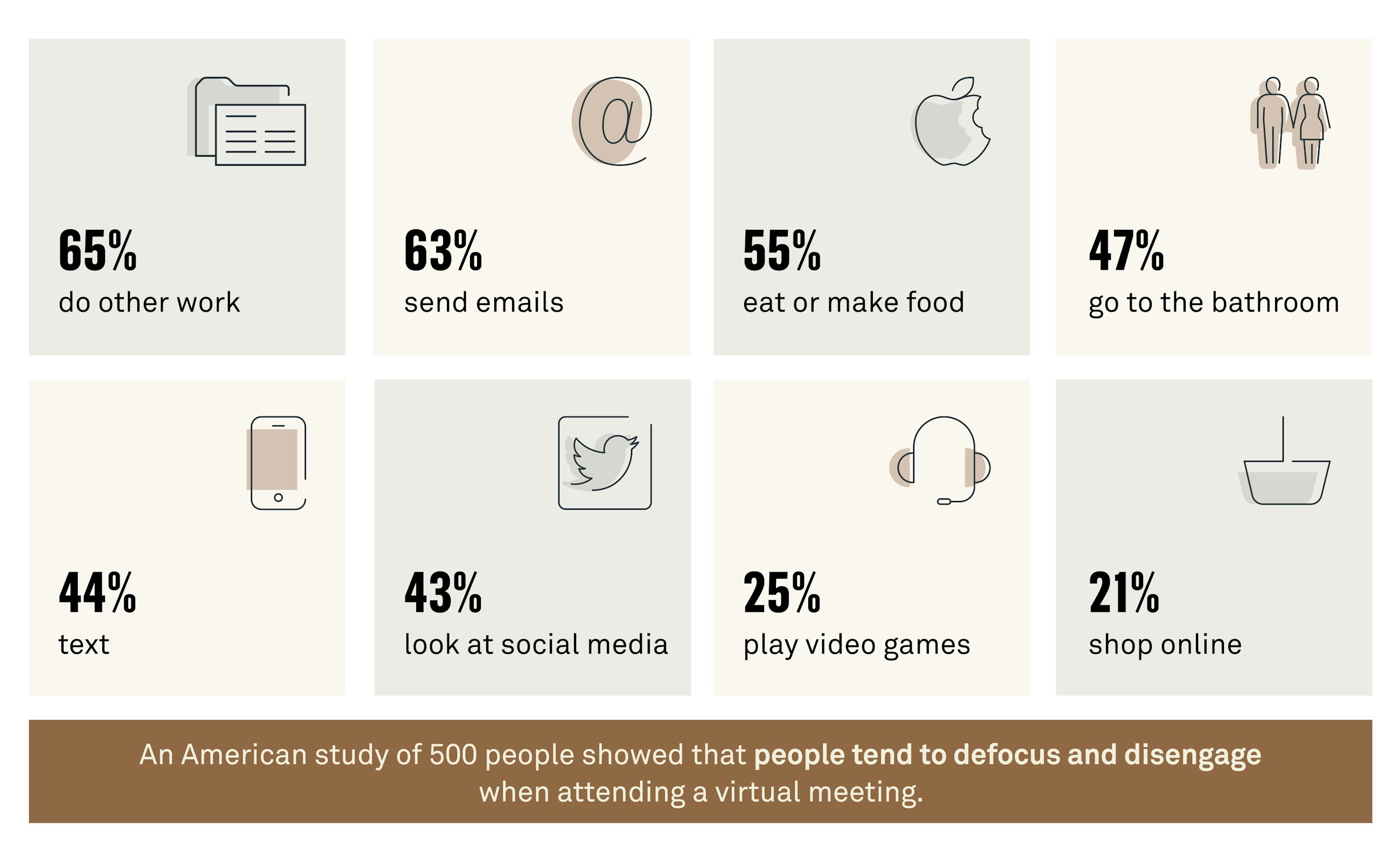Reshaping a virtual sales engine
1. Build virtual capabilities
The journey to a virtual sales model starts with investing in professional web conferencing solutions. And most organisations are currently stuck at this stage. They have the technology in place to hold virtual meetings but still struggle to make the meetings efficient. Upskilling Sales and Marketing is essential, so employees understand the tools, how to interact with customers and how to make virtual meetings into something beyond two people using their computers to speak to each other.
2. Reinvent Marketing
Normal content pieces are simply not fit for virtual interactions. It’s vital that you tailor your content for digital meetings and that Marketing is empowered to support the virtual interaction. You may have been able to keep participants’ attention with lengthy PowerPoint slides in face-to-face meetings, but in the digital world, reducing your presentation to just a handful of slides is essential to maintaining engagement and focus virtually. Designing bite-sized insight snippets such as videos or small webinars that are fit for a virtual delivery model will also help inspire customers and keep them engaged.
3. Reshape key sales activities
There are a multitude of different customer interactions, such as prospect meetings, solution demos, concluding the sales process, key account management, problem solving, value capturing and renegotiation meetings to name just a few. Each meeting calls for a small playbook or formula on how to conduct a winning interaction virtually.
However, change won’t happen unless leaders make it happen. Virtual sales coaching and sales management is key to a successful sales model transformation. Sales and commercial managers need to master virtual interactions so they can take the virtual medium into their sales management operation model and support their employees. Management support is crucial to driving the change on the commercial front-line.
4. Reinvent the commercial operating model
Sales organisations will experience that virtual interaction is fit for many kinds of meetings and that we can carry this new way of communicating into the future. In fact, many customers may want to keep certain meetings virtual, meaning that some of the benefits of going digital should be embedded in a new operation model.
Transform your sales organisation
Creating a virtual sales model will not only equip your organisation to deal with current challenges, it will also make you fit for a future where a digital operating model is an integral part of sales.
This new way of interacting improves our ability to showcase our expertise, as we’re no longer constrained by travelling and calendar logistics. Instead, sales meetings can be focused solely on who is best equipped to provide value and solve the challenge at hand.
Sources
1) Travelport, 2018
2) Captio, 2019
3) Journal of Occupational and Environmental Medicine, 2019
4) Raconteur, 2018
5) Medium, 2019
6) ICAO, 2016
7) SalesTrip, 2019
8) Statista, 2018 (based on US business trips)
Figure 1 - sources
* Due to the effect on general health (incl. diet and sleep), there is less free time and time for family.
** Compared to employees who travel for work 1-6 nights over the same period.


